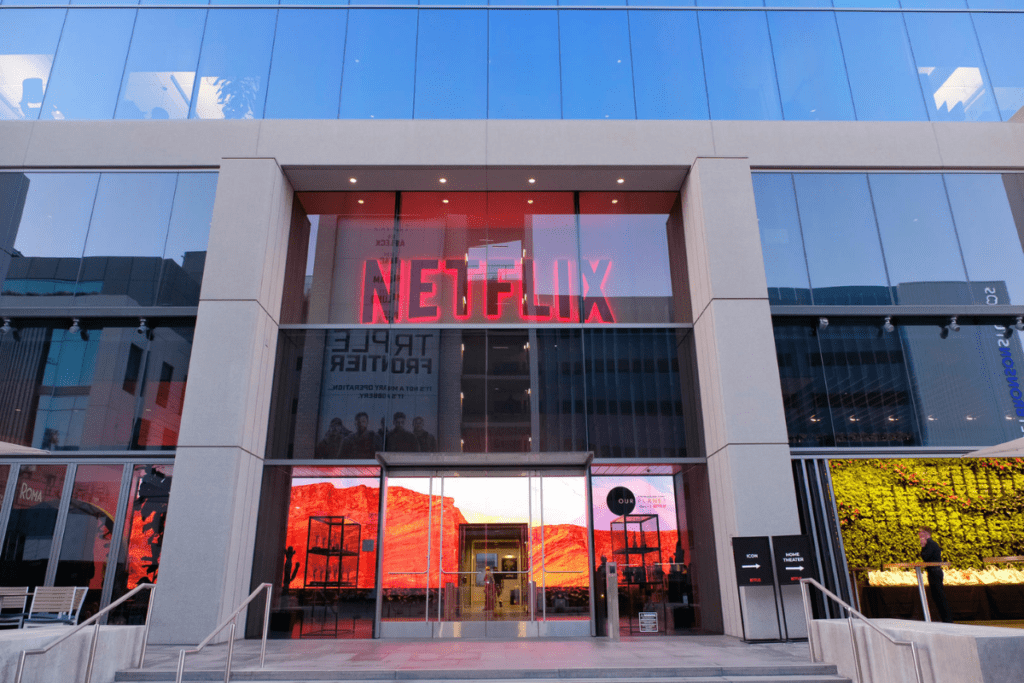Investors are preparing themselves for the prospect that Netflix is entering a new phase of slower growth.
Streaming giant, Netflix, expects to add just 2.5 million subscribers this quarter, a number that falls short of Wall Street’s estimates and would mark the slowest start to a new year for the company in at least a decade.
Shares of Netflix fell as much as 20 per cent to $404.50 in after-hours trading, erasing about $45 billion in market value as investors braced for the prospect that the streaming giant is entering a new phase of slower growth. Walt Disney and Roku also slumped.
Netflix added just 18.2 million customers in 2021, down about 50 per cent from the record year before. It is forecasting that slowdown will continue, at least for another quarter, with the outlook for the current period missing Wall Street’s projection of 6.26 million new subscribers.
Company executives struggled to identify why growth has slowed. They blamed a tough economy, especially in Latin America, as well as lingering fallout from the pandemic.
Management also acknowledged the potential impact from rival streaming services. Co-founder Reed Hastings has long dismissed competition as a problem, noting Netflix grew as many rivals came into the business. But Netflix is changing its tune slightly.
“It’s tough to pinpoint why [subscriber] acquisition hasn’t recovered to pre-Covid levels,” chief financial officer Spencer Neumann said on a webcast on Thursday. He and his colleagues reiterated their confidence in the long-term prospects for the business.
The ups and downs of the pandemic have caused the company’s trajectory to be less predictable. Netflix posted its best subscriber growth ever in 2020, when billions of people were stuck at home.
But the company has said that pulled from future growth and led to a slow start to 2021. The company ended the year with two strong quarters. Netflix signed up 8.28 million customers in the fourth quarter of 2021, according to a statement on Thursday, beating Wall Street estimates, although shy of its own forecast of 8.5 million.
The just-ended quarter featured the strongest slate in Netflix history, with more big titles released in the final months of 2021 than in any previous period. They included new seasons of the popular series The Witcher and Money Heist, the new shows Maid and My Name, and the movies Red Notice and Don’t Look Up.
Those two pictures are Netflix’s two most-viewed original movies ever. People watched the action film Red Notice for more than 364 million hours in its first 28 days, and spent almost 350 million hours with the climate-change satire Don’t Look Up. That’s the equivalent of about 180 million people watching Red Notice once, and about 140 million people going to see Don’t Look Up.
The slate of shows for the current quarter isn’t as strong and many of the biggest titles won’t debut until March.
Investors have long seen Netflix as a growth stock, a company that will add tens of millions of customers a year as people transition from pay TV to internet video. Netflix has delivered on that promise for a decade, growing year after year en route to more than 200 million subscribers. Its stock climbed almost 6,000 per cent over the 10 years than ended in December.
But now that the company has signed up so many customers in North America and much of Europe, growth gets more challenging. Europe and Asia were the company’s most important markets in 2021. Netflix added 7.14 million customers in Asia Pacific and 7.34 million in Europe, Middle East and Africa.
The strong dollar is costing Netflix money in many of those international markets. Management estimates that the dollar’s appreciation will reduce 2022 sales by about $1bn.
Asia will only get more important − and more challenging. Netflix has only just started to achieve success in markets like South Korea and Japan, and plans to accelerate its work there with 20 original programmes from Korea this year. It has yet to crack India, the other major market in the region.
“The thing that frustrates us is why haven’t we been more successful in India,” Mr Hastings said during the webcast.
Netflix relies on a mix of subscriber growth and price increases to boost sales. The company raised prices in the US and Canada this month. Those are two of its most mature markets and the places where management can derive more growth from price increases than new customers.
Netflix keeps prices the same, or even lowers them, in markets where it is still searching for more of a foothold, like South-East Asia and India.
While Netflix has relied on movies and TV shows to draw customers during its 25-year history, chief product officer Greg Peters identified another potential source of growth on Thursday: gaming.
The company just introduced games to its service in the second half of 2021 and plans to expand its offering over many years. It will both develop games in-house, and license popular titles from existing studios.
(Except for the headline, this story has not been edited by The Finance World staff and is published from a syndicated feed.)

